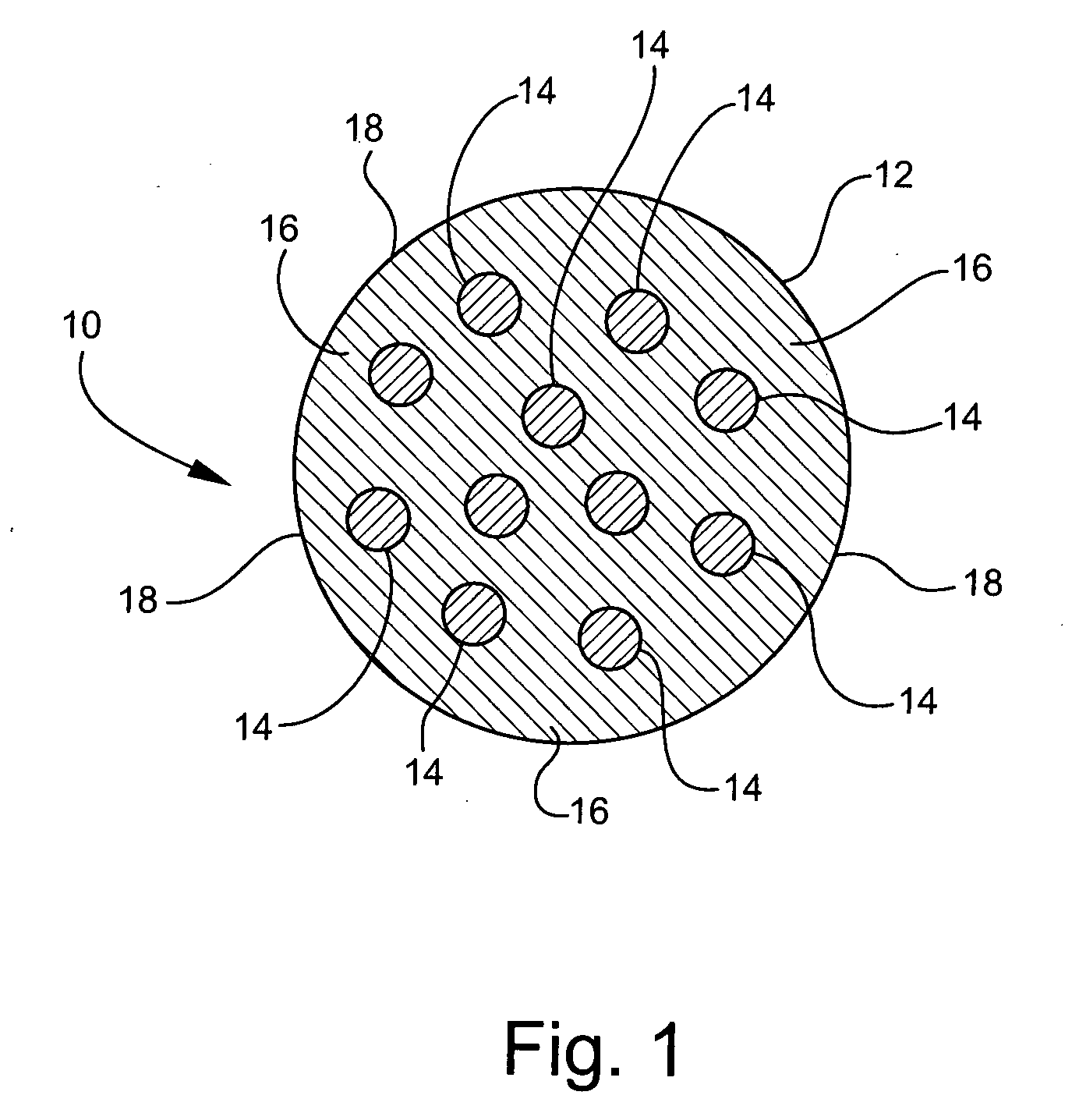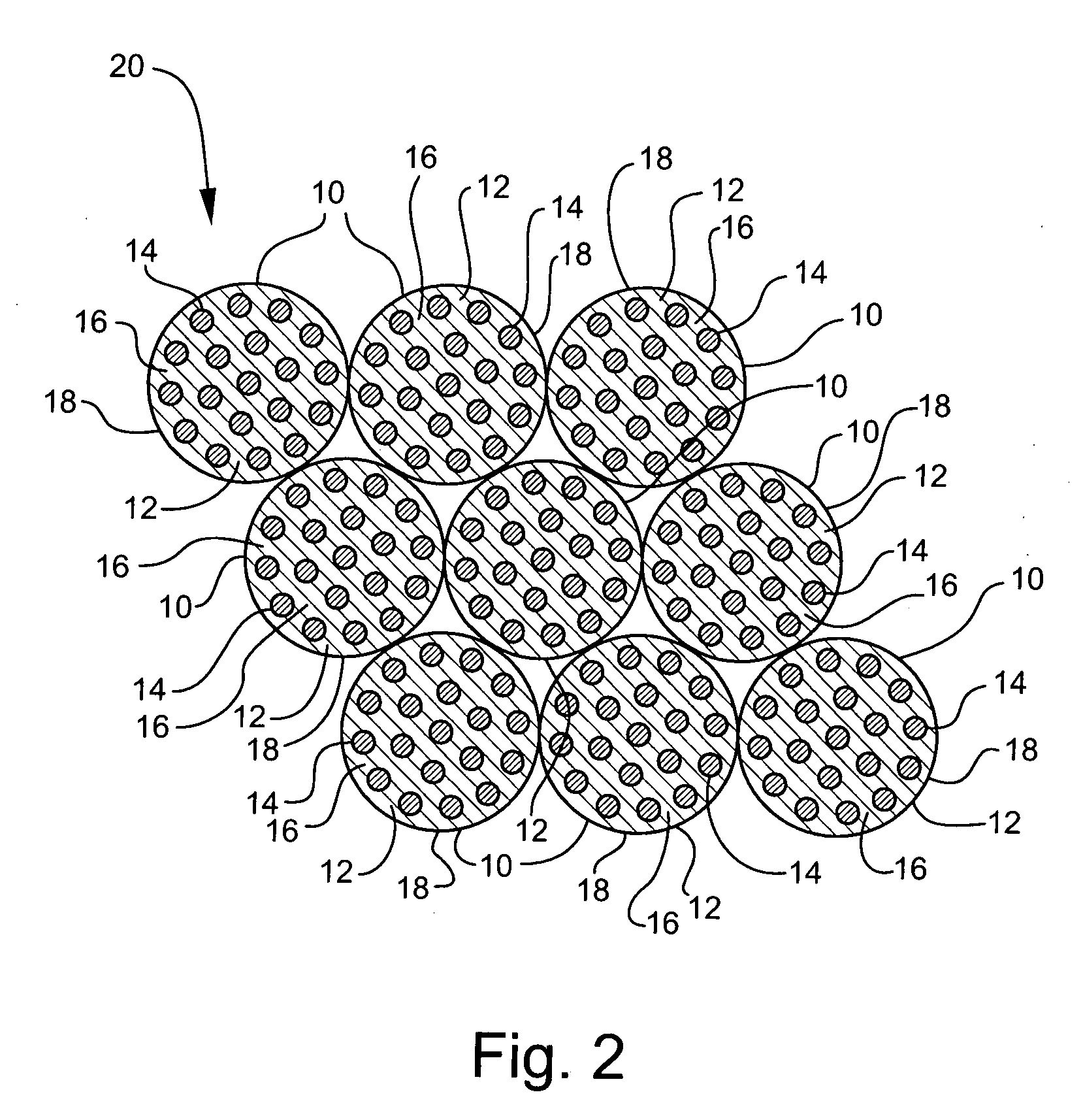Transparent, reinforced, composite fiber and articles made therefrom
a composite fiber and multi-component technology, applied in the direction of transportation and packaging, other domestic articles, synthetic resin layered products, etc., can solve the problems of limited mechanical properties that can be achieved using un-oriented polymers, limitations to mechanical properties that can be achieved in drawn polymer films, and significant weight of parts
- Summary
- Abstract
- Description
- Claims
- Application Information
AI Technical Summary
Benefits of technology
Problems solved by technology
Method used
Image
Examples
Embodiment Construction
[0019]Referring to FIG. 1, there is shown transparent, reinforced composite fiber 10 of the present invention. Fiber 10 comprises polymer 12 and fibrous polymeric reinforcement elements 14. In accordance with the invention, polymer 12 and fibrous polymeric reinforcement elements 14 are thermoplastic polymers that are transparent to visible light and can be processed into multi-component fibers using methods known in the polymer fiber industry. In a preferred embodiment, the aforesaid thermoplastic polymers are chosen from the group consisting of organic, semi-organic and inorganic polymers. Thus, these aforesaid thermoplastic polymers include, but are not limited, to polyolefin, poly (cyclo-olefin), polyamide, polycarbonate, acrylic, vinyl, polystyrene, polyurethane, polyimide, etc. Polymer 12 has a peripheral portion 16 that circumferentially extends about polymer 12 and defines outer surface 18.
[0020]In accordance with the invention, polymer 12 has a glass transition temperature a...
PUM
| Property | Measurement | Unit |
|---|---|---|
| wavelengths | aaaaa | aaaaa |
| refractive indices | aaaaa | aaaaa |
| transparent | aaaaa | aaaaa |
Abstract
Description
Claims
Application Information
 Login to View More
Login to View More - R&D
- Intellectual Property
- Life Sciences
- Materials
- Tech Scout
- Unparalleled Data Quality
- Higher Quality Content
- 60% Fewer Hallucinations
Browse by: Latest US Patents, China's latest patents, Technical Efficacy Thesaurus, Application Domain, Technology Topic, Popular Technical Reports.
© 2025 PatSnap. All rights reserved.Legal|Privacy policy|Modern Slavery Act Transparency Statement|Sitemap|About US| Contact US: help@patsnap.com



